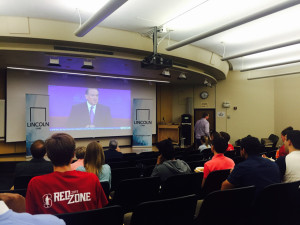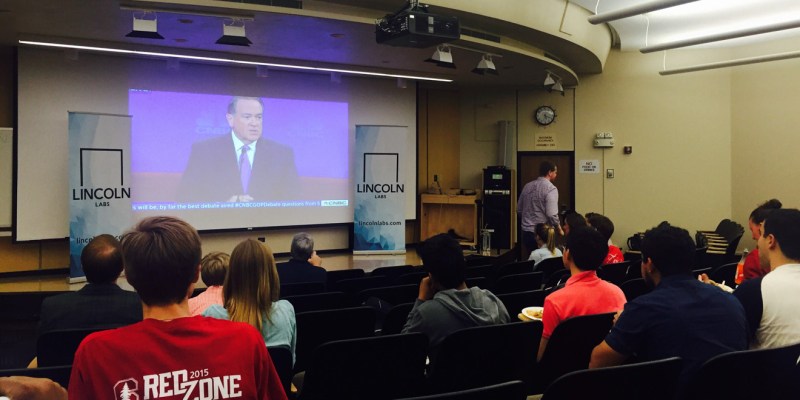
With presidential primaries approaching, candidates are making their cases on national television and Stanford students are listening, as students across campus have been organizing and attending debate watch parties.
“I see it as a way to bring people together who have interest in watching the debate, people who are either politically minded or not, given space to come together and be more aware of what’s going on in the election,” said Sara Orton ’16, president of Stanford Democrats.
These debate viewing events usually offer attendants free food and a public space to discuss the candidates with other students. And even though these events have been mostly hosted by groups such as the Stanford Democrats and the Stanford Republicans, they are open to all students without regard for political affiliations.
“Of course [the event] is always open to anyone who wants to come; we encourage people of all political backgrounds because I think people of all political backgrounds want to watch these debates,” said Abby Fanlo ’16, president of the Stanford Conservative Society.
According to Orton, the debate-watching events offer a public space for any interested student to learn about and discuss candidates’ points of view.
“For Bernie and Hillary, there were people from both sides of those campaigns,” Orton said in regard to Stanford Democrats’ Oct. 13 Democratic debate watching party, held in Branner Hall. “It was clear there was a diversity of thought in the room.”
Despite being welcoming to all students, there is a definite partisanship that figures into each group’s motivation for holding these debates, and into how many students actually turn up.
Orton said that the turnout for the Stanford Democrats’ Republican debate-watching event was lower than for the Democratic debate. The Oct. 28 debate watch party featured dinner and bingo in the Crothers basement — a venue that also might have contributed to the lower turnout.
“The Republican debate can be really challenging and not fun to watch for somebody who disagrees with a lot of things that are stated,” Orton said.
The Stanford Conservative Society only hosted one Republican debate watching event for the Oct. 28 debate, preferring to focus on one event rather than stretch itself too thin. The group partnered with Stanford Republicans, The Stanford Review and Lincoln Labs, a local group for conservatives in tech.
“The reason behind wanting to have a debate viewing party is to give the conservative community and conservative network an opportunity to come together and see the Republican candidates debating each other,” Fanlo said.
Because debate-watching parties hosted by political groups on campus do have a certain partisanship, Malachi Dray ’18, a resident of the Humanities House, decided to host his own political debate viewing party in the lounge of his dorm to create a more neutral space.
“I thought it would be good to have as a residential activity,” Dray said. “It would be good to have a space that’s not explicitly politicized in a way that’s set up to root for a particular party, and rather to have a space that is nonpartisan in a way that allows for a broader variety of political thought to be considered.”
He also said it offered a more convenient option for house residents to watch the debate than having to venture out to find an event outside their house.
Fanlo recognized time and convenience as an issue and thus explained how the Stanford Conservative Society decided not to include a discussion in their event.
“The struggle honestly is asking… Stanford students in Week 6 to come spend two and half to three hours watching a debate,” Fanlo said. “And then [to] also ask them to stay afterwards for a discussion is just a lot of time.”
She also posited this as an explanation to perceived voter apathy among students on campus. For Orton, watching debates is just a small part of what it means to be politically active.
“I don’t think debate viewing parties are a great indication of young people in political involvement, but it could be one aspect of a bigger picture,” Orton said.
Dray also stated that debate watching is not all there is to political action. He believes that younger generations are quite politically active, despite the low voter turnout numbers.
“I think there’s a different kind of political consciousness among our generation that recognizes the unworkability of the two party system to resolve real questions,” Dray said.
Despite the fact that according to him, political debates only allow a handful of voices and perspectives to reach citizens, he still finds it beneficial to be informed whether in a partisan or nonpartisan setting.
“I think it’s always good for people to be informed about the political life of their country and to know what the viable candidates to hold executive office think about important issues,” Dray said.
Contact Andrea Villa at acvilla ‘at’ stanford.edu.
